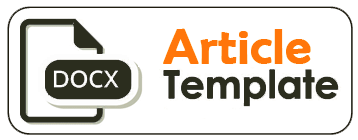Development Of Logic And Algorithm E-Training Material With Block Programming
DOI:
https://doi.org/10.32497/jaict.v2i1.1089Keywords:
Information Technology, elearning material developmentAbstract
Integrating logical and analytical thinking activities to support 21st century learning ability, into a learning activity at elementary and junior high school level becomes a challenge. One of them is less interesting learning media. One of the technologies that can be used to support exciting learning is block programming Alice and Scratch. This article aims to develop online training materials Logic and Algorithm utilize block programming scratch for level five elementary school and block programming Alice for level eight junior high school as eLearning content. The development of this research is carried out by Analysis-Design-Development-Implementation-Evaluation (ADDIE) development model. Initial products were reviewed and advised by 2 primary school teachers, 2 junior high school teachers. Product quality assessment is done based on content feasibility aspect, feasibility of presentation, language feasibility using Likert scale. The results data are then analyzed using the ideal scoring criteria to determine product quality. The results of the overall training content quality assessment show an average grade of 89.8 with good.References
S. H. Rodger et al., “Enhancing K-12 education with alice programming adventures,” Proc. fifteenth Annu. Conf. Innov. Technol. Comput. Sci. Educ. - ITiCSE ”™10, p. 234, 2010.
N. R. Shamsuar, “Game Design as a Tool to Promote Higher Order Thinking Skills,” Int. J. Innov. Educ. Res., vol. 2, no. 6, pp. 51”“58, 2014.
Lifelong Kindergarten Group, “Getting Started With Scratch Version 2.0,” M.I.T. Media Lab, 2013.
D. Gunawan, F. Yasin, and A. Irsyadi, “Pemanfaatan Pemrograman Visual Sebagai Sarana Pengenalan Pemrograman Komputer Untuk Pembuatan Game Edukasi,” vol. 15, no. 2.
S. Cooper, W. Dann, and R. Pausch, “Alice: a 3-D tool for introductory programming concepts,” J. Comput. Sci. Coll., vol. 15, no. May 2000, pp. 107”“116, 2000.
E. Sykes, “Determining the Effectiveness of the 3D Alice Programming Environment at the Computer Science I Level,” J. Educ. Comput. Res., vol. 36, no. 2, pp. 223”“244, 2007.
Hansun, “Pemrograman Visual untuk Semuanya,” J. Ultim. InfoSys, vol. V, no. 1, pp. 41”“48, 2014.
Toheri and Nuraenafisah, “PENGARUH PENGGUNAAN SCRATCH TERHADAP KREATIVITAS BERFIKIR MATEMATIS (Studi Eksperimen Terhadap Siswa Kelas VIII MTs Negeri Ketanggungan Kabupaten Brebes),” Eduma, vol. 2, no. 1, 2013.
Downloads
Published
Issue
Section
License
Authors who publish with this journal agree to the following terms:Authors retain copyright and grant the journal right of first publication with the work simultaneously licensed under a Creative Commons Attribution License that allows others to share the work with an acknowledgement of the work's authorship and initial publication in this journal.
Authors are able to enter into separate, additional contractual arrangements for the non-exclusive distribution of the journal's published version of the work (e.g., post it to an institutional repository or publish it in a book), with an acknowledgement of its initial publication in this journal.
Authors are permitted and encouraged to post their work online (e.g., in institutional repositories or on their website) prior to and during the submission process, as it can lead to productive exchanges, as well as earlier and greater citation of published work (See The Effect of Open Access).






